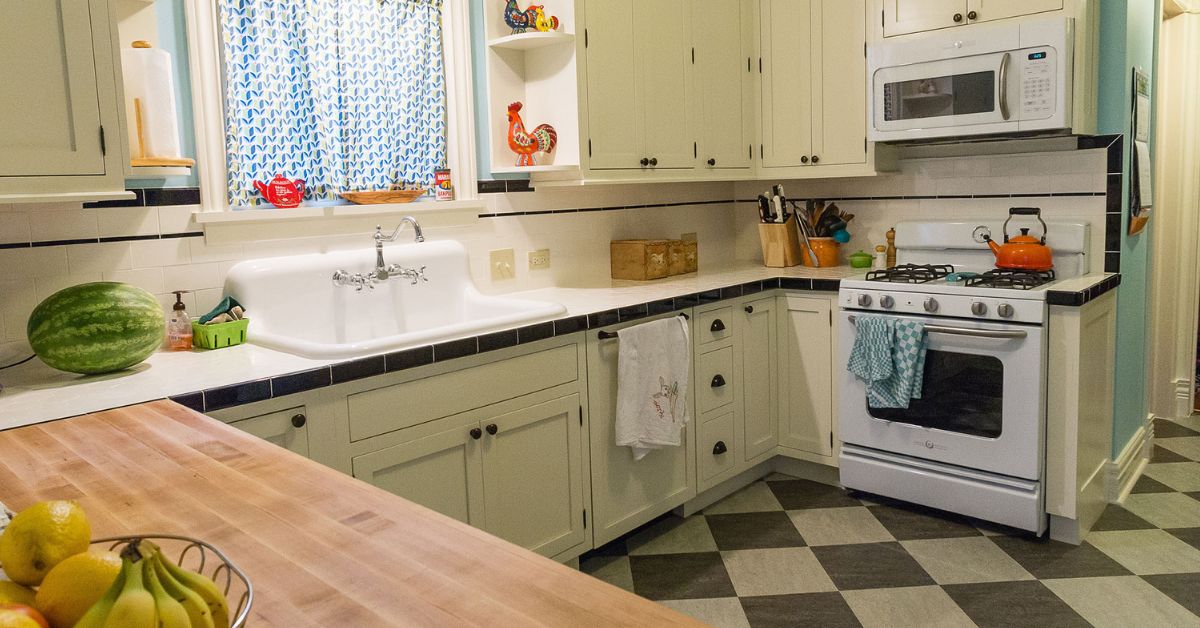
Whether you’re washing fresh produce or scrubbing dishes after a hearty family meal, a well-maintained sink makes daily life smoother. For sinks made of fiberglass-reinforced acrylic, careful upkeep helps retain their durability and charm. With the right approach, you can make maintaining your farmhouse kitchen sink easy.
Clean Regularly With Gentle Solutions
Regular cleaning is the key to maintaining your sink’s pristine appearance. Make it a habit to clean your sink daily using a mixture of mild dish soap and warm water. Gently wipe the surface with a soft sponge or cloth to remove residue, grease, or grime that builds up from everyday use.
Avoid harsh or abrasive cleaners that can scratch or dull the delicate acrylic coating over time. When you finish, rinse the sink thoroughly with clean water to wash away any soap residue, and take an extra moment to dry it to prevent water spots or streaks from forming.
Dry the Sink After Use
A quick wipe-down after each use can make a big difference in maintaining your sink’s beauty and functionality. After cleaning and rinsing, use a soft cloth or microfiber towel to thoroughly dry the sink. This prevents water spots, mineral buildup, and the dulling effects often caused by hard water.
Avoid Harsh Abrasives
While fiberglass-reinforced acrylic is durable, it isn’t completely resistant to damage. Harsh abrasives such as steel wool, gritty scrub pads, or powdered cleaners can leave deep scratches on the surface, diminishing the sink’s smooth finish.
For tough stains or grime, opt for nonabrasive tools such as a gentle sponge or a soft-bristle brush. These tools will effectively clean your sink without compromising its aesthetic appeal or structural integrity. Taking this precaution ensures your sink stays smooth and scratch-free, even after years of use.

Use Baking Soda for Stubborn Spots
For stains that don’t come off during regular cleaning, baking soda is your go-to solution. Sprinkle a generous amount of baking soda onto the stain, then add a few drops of water to form a paste. Use a nonabrasive sponge to gently scrub the area in small, circular motions. Once the stain is gone, rinse thoroughly to remove any baking soda residue and restore your sink’s clean appearance.
Rinse Away Residue
After every use, take a moment to completely rinse your sink. Food particles, soap suds, and leftover cleaning solutions can linger on the surface, eventually leading to buildup that dulls the finish. A quick rinse with warm water ensures your sink stays fresh and prevents grime or hard-to-remove stains from forming. This simple step is especially important after preparing food, as lingering residue can also lead to unpleasant odors over time.
Protect Against Heat
Although your sink can handle daily use, excessive heat can cause the acrylic surface to warp or weaken. To avoid any damage, always use a trivet, heat pad, or cooling rack under hot pots, pans, or baking trays before placing them in the sink. This extra layer of protection helps maintain the structural integrity of the sink and ensures it can withstand years of use without warping or cracking due to heat exposure.
Avoid Harsh Chemicals
Some cleaning products, including bleach, ammonia, and harsh drain cleaners, can strip the finish off your sink and weaken the acrylic material over time. Instead, stick to cleaners specifically formulated for acrylic surfaces, or opt for natural cleaning solutions such as baking soda and white vinegar. Using gentle, nontoxic products will keep your sink safe from damage while still delivering a deep and effective clean.
Use Separate Cutting Boards
No matter how tempting it may be, your sink should never double as a cutting board. Using your sink as a cutting surface can create scratches, nicks, or gouges that damage the acrylic finish. Over time, these imperfections can collect food particles and bacteria, making your sink harder to clean. Instead, invest in a sturdy cutting board for food preparation.

Treat Hard Water Deposits
If you live in an area with hard water, mineral deposits can build up on your sink’s surface, leaving unsightly marks and dull patches. White vinegar is an effective and natural solution for tackling these deposits. Soak a clean cloth in vinegar, then gently wipe down the affected areas. For tougher spots, let the vinegar sit for a few minutes before scrubbing lightly and rinsing thoroughly. Regularly addressing hard water deposits will keep your sink looking clean and polished.
Repair Scratches Promptly
Even with careful maintenance, minor scratches may appear over time. Addressing them promptly can prevent them from worsening. For shallow scratches, use a nonabrasive acrylic repair product or a polishing compound designed for acrylic surfaces. Apply the product according to the manufacturer’s instructions, and buff the area gently to restore the smooth finish. With thoughtful attention and care, you can maintain your farmhouse kitchen sink and ensure it continues to serve your household for years.
Use Sink Mats for Protection
Heavy cookware or accidental drops can cause chips, scratches, or cracks in your sink. Adding a soft mat at the bottom of your sink creates a protective barrier that can absorb impacts and reduce wear and tear. These mats are especially useful if you frequently wash heavy pots and pans, utensils, and large cups. They also make cleanup easier by preventing items from slipping or scratching the sink’s surface.
Polish the Surface
To restore your sink’s shine and provide additional protection, use a nontoxic polish specifically designed for acrylic surfaces. Polishing enhances the sink’s appearance, repels stains, and adds a layer of protection against daily wear and tear. Apply the polish sparingly, following the manufacturer’s instructions, and buff gently to achieve a polished, like-new finish.
Treat It With Care
Treating your vintage kitchen sink with care will go a long way in preserving its beauty and functionality. Avoid dropping heavy objects into the sink or using harsh cleaning tools that could damage its surface. Mindful handling, combined with proper maintenance, ensures your sink remains a stylish and dependable feature in your home for many years to come.
